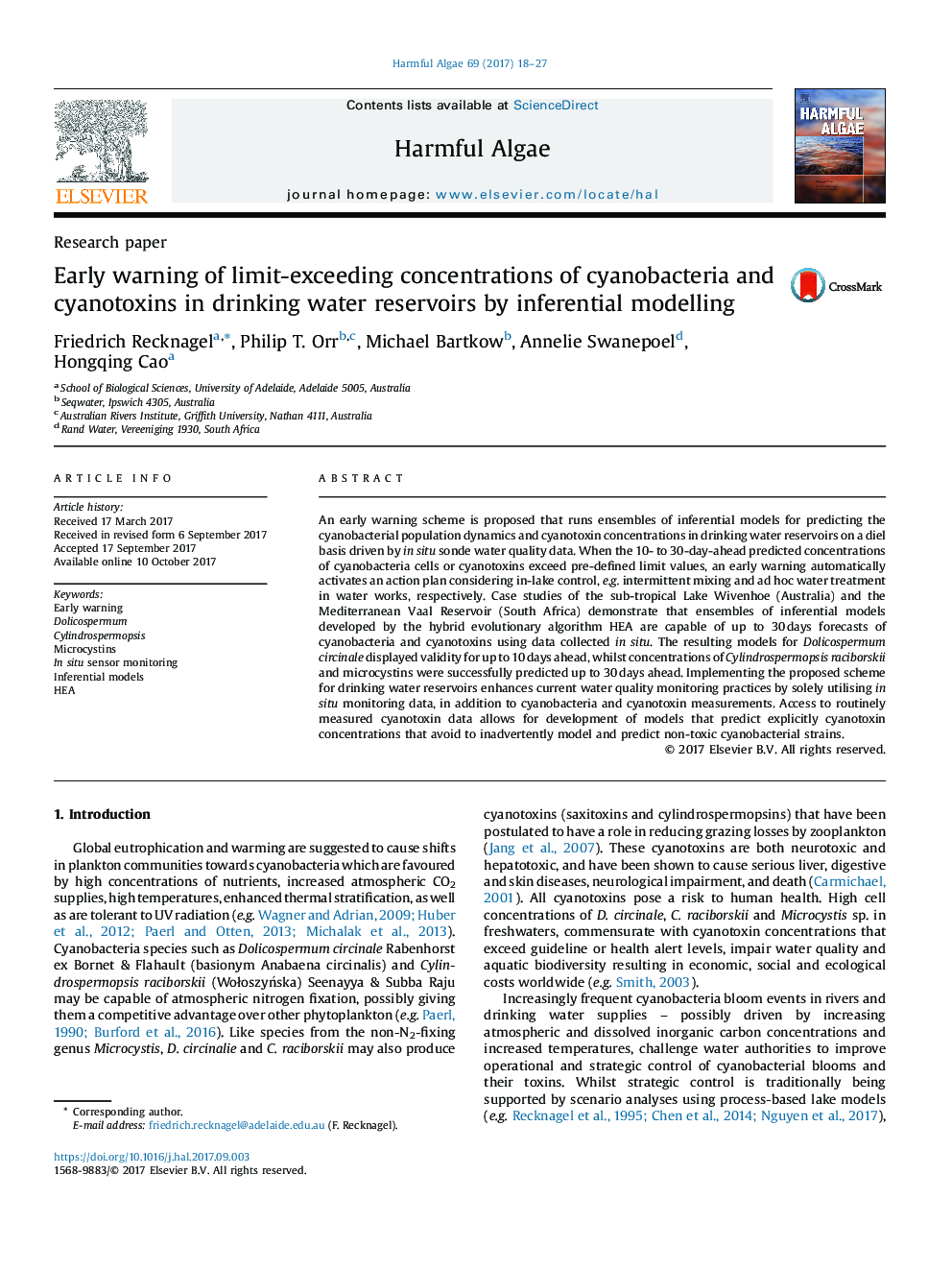| کد مقاله | کد نشریه | سال انتشار | مقاله انگلیسی | نسخه تمام متن |
|---|---|---|---|---|
| 5765683 | 1626903 | 2017 | 10 صفحه PDF | دانلود رایگان |
- Novel early warning scheme for proliferation of Dolichospermum, Cylindrospermopsis and microcystins in drinking water reservoirs.
- Forecasting of proliferation rates and concentrations of Dolichospermum, Cylindrospermopsis and microcystins up to 30 days ahead.
- Inferential forecasting models solely using in situ water quality data as predictor variables.
- Quantifying threshold conditions indicative for growing concentrations of Dolichospermum, Cylindrospermopsis and microcystins.
An early warning scheme is proposed that runs ensembles of inferential models for predicting the cyanobacterial population dynamics and cyanotoxin concentrations in drinking water reservoirs on a diel basis driven by in situ sonde water quality data. When the 10- to 30-day-ahead predicted concentrations of cyanobacteria cells or cyanotoxins exceed pre-defined limit values, an early warning automatically activates an action plan considering in-lake control, e.g. intermittent mixing and ad hoc water treatment in water works, respectively. Case studies of the sub-tropical Lake Wivenhoe (Australia) and the Mediterranean Vaal Reservoir (South Africa) demonstrate that ensembles of inferential models developed by the hybrid evolutionary algorithm HEA are capable of up to 30Â days forecasts of cyanobacteria and cyanotoxins using data collected in situ. The resulting models for Dolicospermum circinale displayed validity for up to 10Â days ahead, whilst concentrations of Cylindrospermopsis raciborskii and microcystins were successfully predicted up to 30Â days ahead. Implementing the proposed scheme for drinking water reservoirs enhances current water quality monitoring practices by solely utilising in situ monitoring data, in addition to cyanobacteria and cyanotoxin measurements. Access to routinely measured cyanotoxin data allows for development of models that predict explicitly cyanotoxin concentrations that avoid to inadvertently model and predict non-toxic cyanobacterial strains.
186
Journal: Harmful Algae - Volume 69, November 2017, Pages 18-27
